Why People Hate HR? And The Solution!
A survey of NY Times, (Link –https://www.nytimes.com/2024/08/03/business/human-resources-professionals-workplace.html), highlighted the plight of HRs in today’s demanding business environment. I am happy to share time tested guidelines to addressing this issue.
Human Resources (HR) departments often grapple with negative perceptions and diminishing motivation among their staff. This article explores the reasons behind why employees may dislike HR, the factors contributing to declining HR motivation, and potential solutions for addressing these issues.

1. Reasons Why Employees Dislike HR
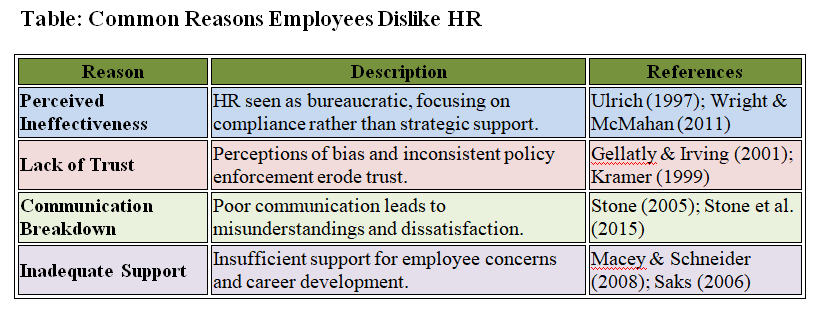
**1.1. Perceived Ineffectiveness and Bureaucracy
- Role Perception: Employees frequently view HR as a bureaucratic entity more concerned with administrative tasks and compliance rather than being a strategic partner (Ulrich, 1997; Wright & McMahan, 2011). This perception can lead to frustration when employees feel HR does not address their needs effectively.
- Studies: Research by Guest (2011) highlights that HR’s focus on policy enforcement and procedural compliance can overshadow its potential role in fostering a positive work environment and supporting employee development.
**1.2. Lack of Trust and Transparency
- Trust Issues: HR departments are sometimes seen as lacking transparency and fairness, particularly in handling employee grievances and enforcing policies (Gellatly & Irving, 2001). This can lead to a perception of bias and favoritism.
- Findings: Kramer (1999) discusses how perceived inequities and inconsistent application of policies can undermine trust in HR, resulting in negative sentiments among employees.
**1.3. Communication Breakdown
- Poor Communication: Ineffective communication from HR can contribute to misunderstandings and dissatisfaction. Employees often report feeling that HR is not accessible or does not provide clear information about policies and changes (Stone, 2005).
- Evidence: Research by Stone, Deadrick, Lukaszewski, and Johnson (2015) indicates that lack of clear communication and engagement with employees can exacerbate negative perceptions of HR.
**1.4. Inadequate Employee Support
- Support Deficiencies: When HR fails to provide adequate support for employee concerns or career development, it can lead to dissatisfaction. Employees may feel that HR is more focused on management interests rather than their personal or professional needs (Macey & Schneider, 2008).
- Examples: Saks (2006) highlights how HR’s failure to actively engage with employees and support their career development can contribute to negative perceptions.
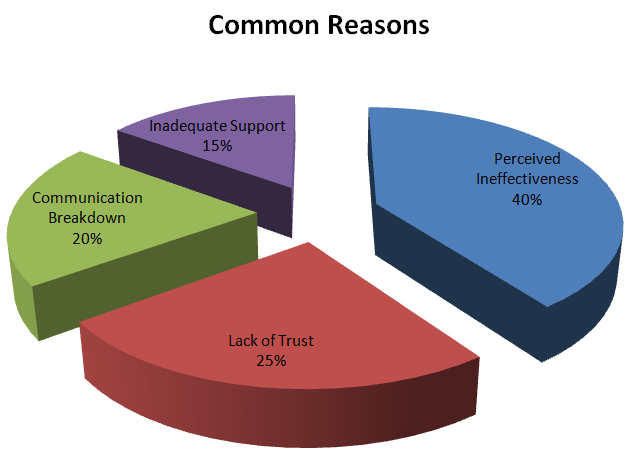
2. Reasons for Declining Motivation Among HR Professionals

**2.1. Increased Workload and Administrative Burden
- Workload Issues: HR professionals often face high administrative workloads, which can lead to burnout and decreased motivation. This workload often includes repetitive tasks that can detract from more strategic and impactful work (Bersin, 2013).
- Research: Studies by Ulrich and Brockbank (2005) show that the administrative burden can limit HR’s ability to focus on strategic initiatives and employee engagement.
**2.2. Lack of Strategic Influence
- Limited Impact: HR professionals may feel demotivated if they perceive their role as lacking influence in strategic decision-making or organizational change (Wright & McMahan, 2011). When HR’s contributions are not recognized or valued, it can affect motivation and job satisfaction.
- Findings: Becker and Huselid (2006) discuss how a lack of involvement in strategic planning and decision-making can lead to decreased motivation and engagement among HR professionals.
**2.3. Perceived Lack of Support and Resources
- Resource Constraints: Limited resources and support from senior management can hinder HR professionals’ ability to perform their roles effectively. This can lead to frustration and reduced motivation (Stone, Deadrick, Lukaszewski, & Johnson, 2015).
- Evidence: Research indicates that insufficient support and resources can negatively impact HR professionals’ job satisfaction and motivation (Bock, 2015).
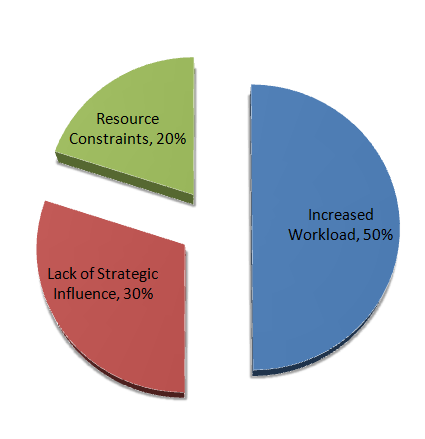
3. Solutions to Improve HR Perception and Motivation
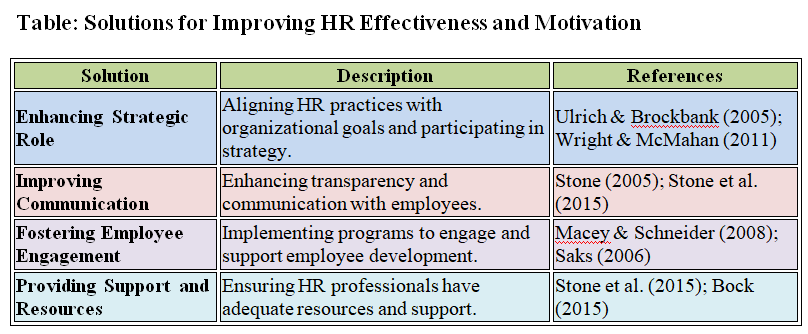
**3.1. Enhancing Strategic Role and Influence
- Strategic Alignment: To address negative perceptions, HR departments should work on aligning their activities with organizational goals and demonstrating their strategic value (Ulrich & Brockbank, 2005; Wright & McMahan, 2011). This involves actively participating in strategic planning and decision-making processes.
- Examples: Implementing initiatives that clearly link HR activities to business outcomes can enhance HR’s perceived value and effectiveness.
**3.2. Improving Communication and Transparency
- Effective Communication: Enhancing communication channels and ensuring transparency can help rebuild trust and improve perceptions of HR. Regular updates, open forums for feedback, and clear explanations of policies can address communication breakdowns (Stone, 2005).
- Practices: Utilizing technology to streamline communication and create more transparent processes can support these efforts (Bersin, 2013).
**3.3. Fostering Employee Engagement and Support
- Engagement Initiatives: HR should focus on actively engaging with employees, providing career development opportunities, and addressing employee concerns more effectively (Macey & Schneider, 2008; Saks, 2006). Engaging employees through surveys, feedback mechanisms, and professional development can improve HR’s reputation.
- Examples: Implementing employee engagement programs and development initiatives can enhance HR’s role in supporting employee growth and satisfaction.
**3.4. Providing Support and Resources for HR Professionals
- Resource Allocation: Ensuring that HR professionals have the necessary resources and support to perform their roles effectively is crucial for maintaining motivation (Stone, Deadrick, Lukaszewski, & Johnson, 2015). This includes investing in HR technology and providing adequate training and development.
- Solutions: Management should recognize and address the resource constraints faced by HR to help improve job satisfaction and performance.
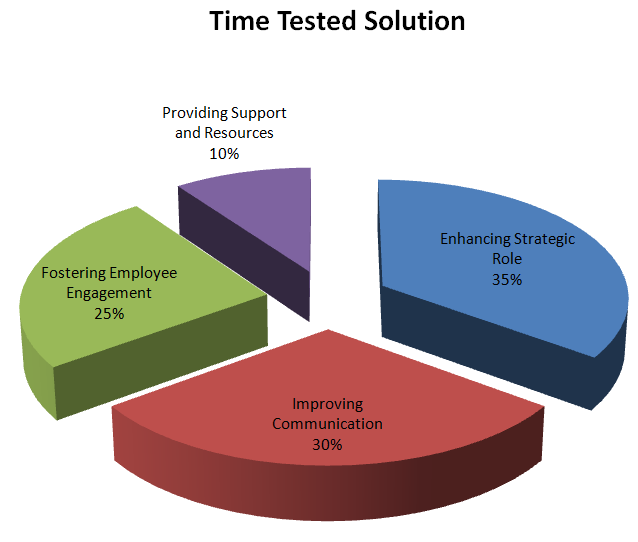
Conclusion
The negative perception of HR and the declining motivation among HR professionals are complex issues rooted in role confusion, trust issues, communication problems, and administrative burdens. Addressing these issues requires a multifaceted approach, including enhancing HR’s strategic role, improving communication and transparency, fostering employee engagement, and providing adequate support and resources for HR professionals. Implementing these solutions can help rebuild trust in HR and improve both employee satisfaction and HR’s effectiveness.
References
- Becker, B. E., & Huselid, M. A. (2006). Strategic Human Resources Management: Where Do We Go from Here? Journal of Management, 32(6), 898-925.
- Bersin, J. (2013). The New HR Ecosystem: How to Get the Most from Your HR Technology. Deloitte University Press.
- Bock, L. (2015). Work Rules!: Insights from Inside Google That Will Transform How You Live and Lead. Twelve.
- Gellatly, I. R., & Irving, P. G. (2001). Perceptions of HRM System Effectiveness: Relationships with Attitudes and Behaviour. International Journal of Human Resource Management, 12(5), 703-724.
- Guest, D. E. (2011). Human Resource Management and Performance. In P. Boxall, J. Purcell, & P. Wright (Eds.), The Oxford Handbook of Human Resource Management. Oxford University Press.
- Kramer, R. M. (1999). Trust and Distrust in Organizations: Emerging Perspectives, Enduring Questions. Annual Review of Psychology, 50, 569-598.
- Macey, W. H., & Schneider, B. (2008). The Meaning of Employee Engagement. Industrial Relations Research Association.
- Saks, A. M. (2006). Antecedents and Consequences of Employee Engagement. Journal of Managerial Psychology, 21(7), 600-619.
- Stone, D. L. (2005). Human Resource Management. Wiley.
- Stone, D. L., Deadrick, D. L., Lukaszewski, K. M., & Johnson, R. (2015). The Influence of Technology on Human Resource Management. Industrial Relations Research Association.
- Ulrich, D. (1997). Human Resource Champions: The Next Agenda for Adding Value and Delivering Results. Harvard Business Review Press.
- Ulrich, D., & Brockbank, W. (2005). The HR Value Proposition. Harvard Business Review Press.
- Wright, P. M., & McMahan, G. C. (2011). Exploring Human Resource Management’s Role in Developing Dynamic Capabilities. Journal of Management, 37(2), 522-550.

This post has really cleared things up for me.
Great write-up, I am regular visitor of your website, maintain up the nice operate, and It is going to be a regular visitor for a long time.